As music producers, you really need to stand out so your tracks can get noticed over the competition.
And one of the best ways to instantly captivate people’s attention is with irresistibly addicting melodies.
They can set the vibe, shape the mood, and completely define the style of your track 一 plus help your tracks get stuck in people’s heads.
Mix that with the latest AI technology and you’ve got yourself pure gold every single time, no doubt about it.
That’s why I’m breaking down how you can create epic AI melodies with the #1 melody generator in the game (MIDI Wizard 2.0), which comes stacked with key features like:
- 3 generation modes ✓
- 32 genre profiles (the most popular) ✓
- 200 built-in synth presets ✓
- 102,000+ genre-labeled MIDI fragments ✓
- 16 onboard FX (Reverb, Destroy, Bitcrush, etc.) ✓
- Built-in sampler to use one-shots or custom sounds ✓
- Drag & drop MIDI or audio straight to your DAW ✓
- Humanization: Velocity variation, swing & timing randomization ✓
- Royalty-free export for commercial use ✓
- Much more to help you create AI melodies ✓
By creating the most legendary AI melodies in the game with MIDI Wizard, there’s no way your songs won’t get some serious clout from a major artist.
Plus, it’ll help you move faster in your production/songwriting process and tap into completely new ideas instantly.
As well as giving you total control over your melody direction without killing your creativity.
This way, you’ll never have to worry about getting stuck on a top-line melody or settling for generic loops ever again.
Table of Contents
- Why MIDI Wizard 2.0 is the #1 AI Melody Generator/AI Music Generator in the World
- How to Create AI Melodies with MIDI Wizard
- Step 1: Choose Your Genre and Musical Style
- Step 2: Select the Generation Mode (Chord, Melody, Hybrid)
- Step 3: Lock In Your Scale, Key, Length, and Type
- Step 4: Generate and Preview AI Melodies Instantly
- Step 5: Customize Using Humanization & Swing
- Step 6: Apply Onboard FX for Instant Character
- Step 7: Drag & Drop Directly Into Your DAW
- Bonus: Advanced Techniques for Working with AI Melodies
- Final Thoughts
Why MIDI Wizard 2.0 is the #1 AI Melody Generator/AI Music Generator in the World
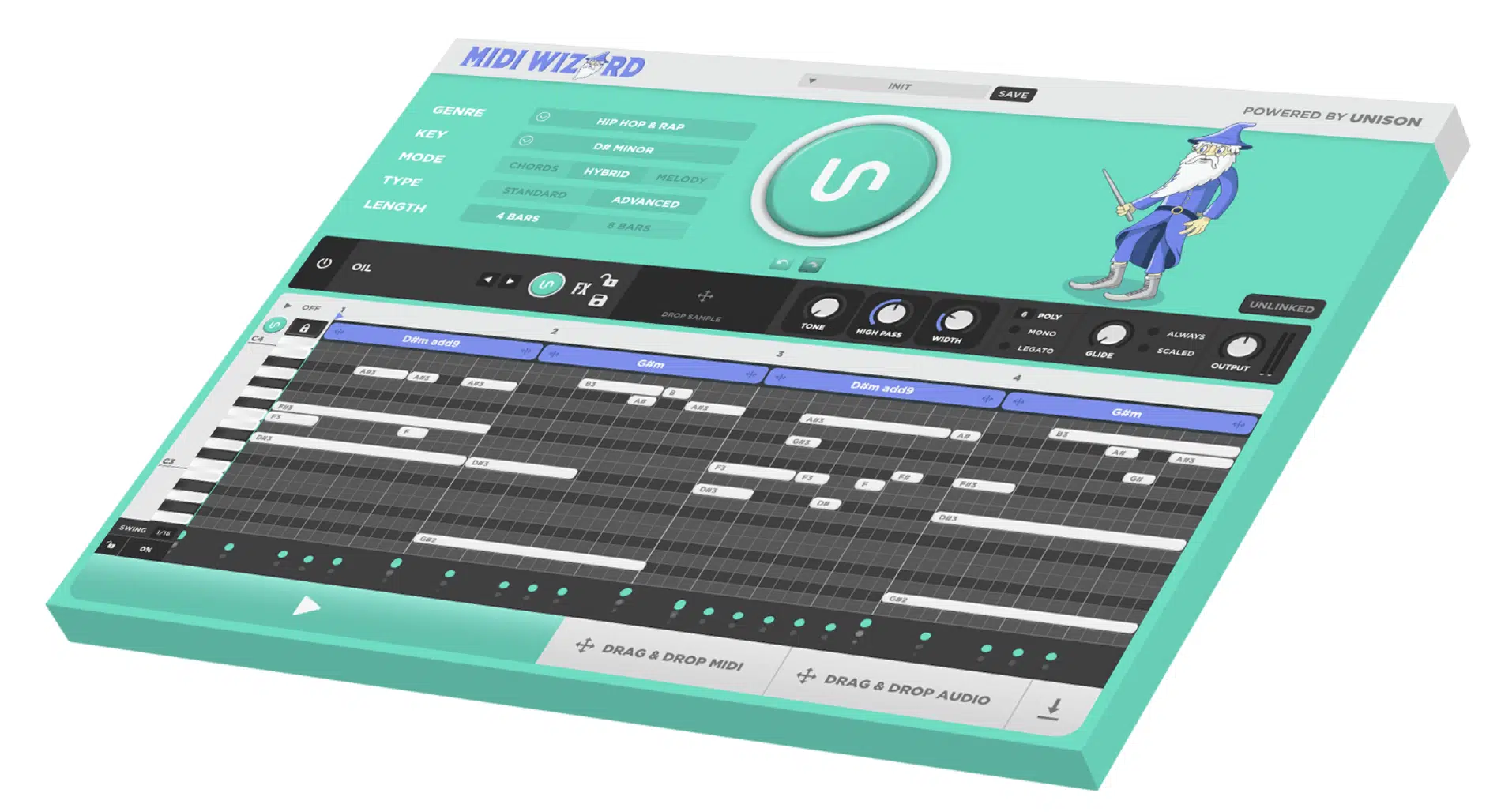
MIDI Wizard 2.0 is the most powerful AI music generator in the game.
It was created specifically for music producers, musicians, and sound designers who want to instantly create AI melodies in all genres.
All without sacrificing quality, originality, or creativity, which is key.
It will instantly help you get the attention of major artists and it won’t sound like “AI music” 一 it’ll just sound like a true professional made it.
It features over 102,000 AI-curated MIDI fragments, 200 built-in synth presets, a flexible sampler, 16 onboard FX like Reverse, Bitcrush, and Destroy.
And, it also lets you lock in your track’s exact key, scale, and tempo before generating AI melodies that match perfectly.
You’ll be free to generate music, download full progressions or melodies, and drag and drop them straight into your DAW.
And yes, everything is 100% royalty-free, cleared for commercial use, and fully compatible with FL Studio, Ableton Live, Logic Pro, Pro Tools, and more.
Plus, with seamless integration into Unison’s ecosystem (like Drum Monkey and Sound Doctor), this melody generator gives you professional-level AI music all day.
It works for all popular genres, from trap, hip-hop, R&B, and house music to cinematic and acoustic guitars.
With it, you can lay down epic AI melodies that actually vibes.
How to Create AI Melodies with MIDI Wizard
Once you open up MIDI Wizard 2.0, knocking out killer AI melodies becomes less about trial-and-error and more about following a creative flow that just… works. So here’s exactly how you can create the most addicting AI melodies in the game (step-by-step) like an absolute boss. Let’s get into it.
Step 1: Choose Your Genre and Musical Style
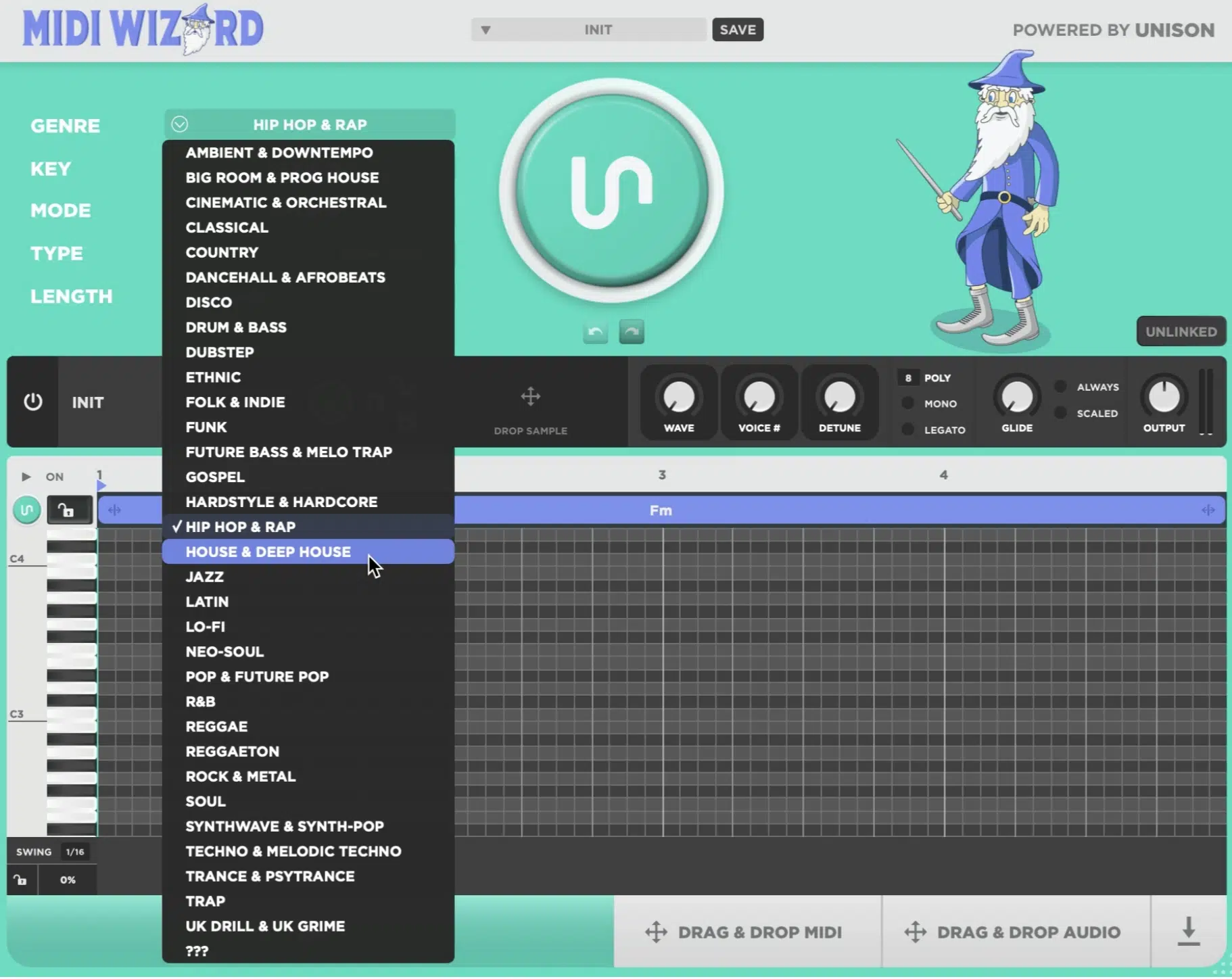
Before you hit generate, you’ll want to pick from one of the 32 available genres, because that choice directly affects the:
- Rhythm
- Density
- Chord voicings
- Overall vibe of the AI melodies you’re going to get
For example, choosing house music gives you tight, syncopated progressions with super smooth transitions.
While picking something like R&B, on the other hand, will lean into slower, more emotional melodies with wider intervals and softer velocities.
And if you’re blending genres (like layering acoustic guitars over lo-fi drums or scoring for a YouTube video that needs a cinematic build) it’s got you covered as well.
You’ll get to test out a few presets across all genres until something hits that sweet spot emotionally and rhythmically.
Regardless of what you’re going for, you’ll get endless options until you find your perfect match.
Step 2: Select the Generation Mode (Chord, Melody, Hybrid)
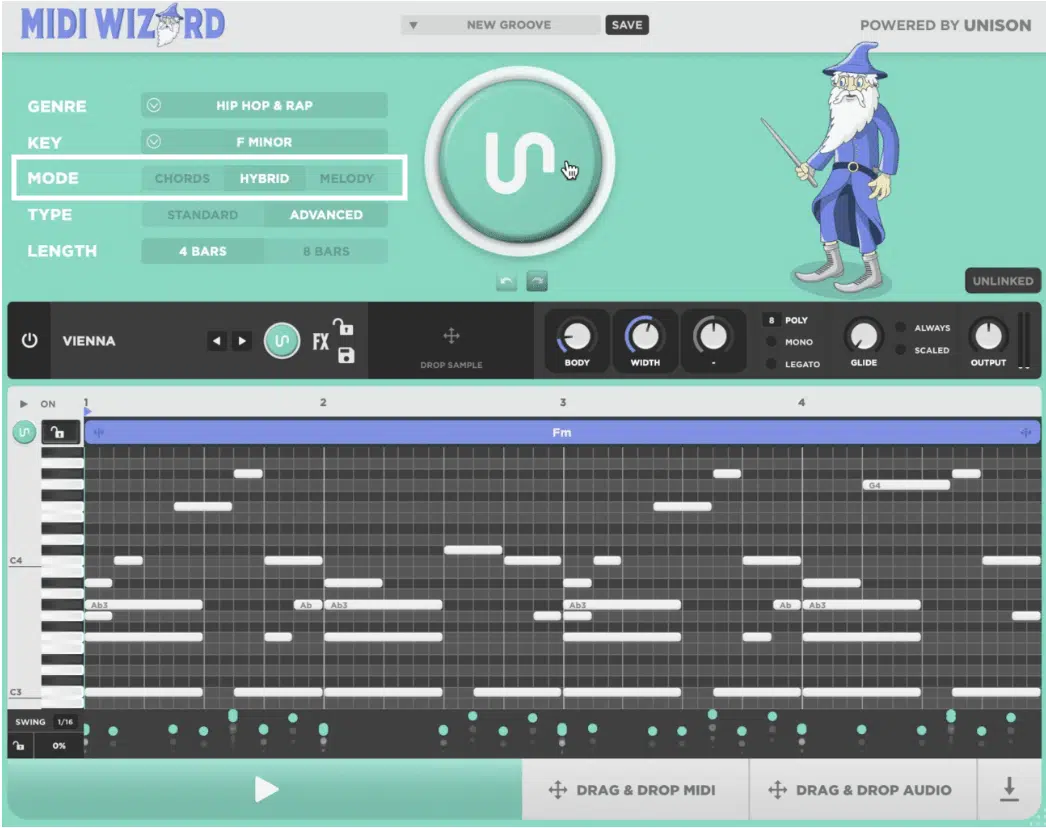
After locking down your genre, the next move is deciding whether you want to generate chords, lead melodies, or both.
And this legendary AI music generator gives you all three options depending on where you’re at in your production/songwriting process, which are:
#1. Chord Mode 一 Gives you block or rhythm-based chord progressions built to match your key, scale, and vibe.
#2. Melody Mode 一 Creates top-line hooks, leads, and single-note phrases that are perfect for layering on top of chords or other elements.
#3. Hybrid Mode 一 Generates both chords and melodies together (locked in harmonically), so you get a full melodic idea in one shot.
Let’s say you already have a sick chord progression from another session…
Selecting Melody Mode lets you generate top-line ideas that sit on top of it without clashing or sounding like an amateur came up with it.
And you can even use the built-in sampler to hear them through your own custom one-shots (dealer’s choice).
But if you’re starting from scratch or just want to create an instant foundation, Hybrid Mode is where it’s at.
It’ll give you full harmonic AI melodies with chords and matching melodies, which you can then drag right into your track and start building around it right away.
So, instead of spending hours figuring out where your melody should go, you’ll already have something inspiring that matches the exact style/mood you’re shooting for.
Step 3: Lock In Your Scale, Key, Length, and Type
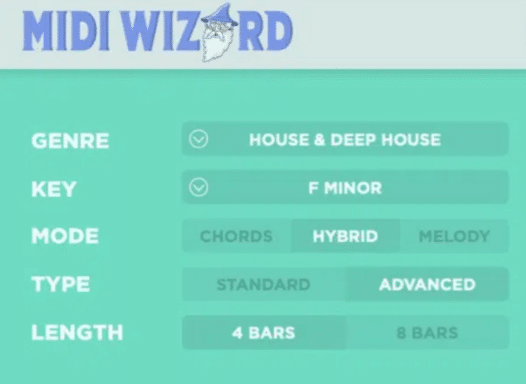
Choosing your preferred scale, key, length, and type is a simple and quick process, but it’s super important to help you get the perfect AI melodies for you.
MIDI Wizard lets you set any key or scale 一 including less common ones like Lydian or Dorian, so your AI melodies stay emotionally consistent with your track’s direction.
For example, if your song already has a bassline in G minor and a 90 BPM tempo, locking those settings in before generating ensures every note fits.
No weird clashes, no fixing later.
And if you’re just experimenting or trying to match a reference track (say something that feels like Apple Music playlist material), try bumping the tempo up to 120+ BPM and setting the key to E major for a brighter mood that feels energetic without being chaotic.
Bottom line, this step is all about making sure your AI melodies actually sound like they belong in the music you’re creating, instead of fighting against it.
Step 4: Generate and Preview AI Melodies Instantly

Once you’ve set your parameters, just hit the “Generate” button and MIDI Wizard will instantly spit out up to 8 different melodic variations.
Again, everything is tweaked to your selected genre, key, and BPM.
For example, if you’re working in D minor at 140 BPM for a trap track, you’ll get rhythmically tight AI melodies with dramatic tension.
On the flip side, generating in C major at 100 BPM for podcast or YouTube background music will lean more mellow and tonal.
You can click through each option and preview them in real time using either the built-in synth (with 200 custom presets) or your own one-shot samples inside the onboard sampler.
This way, you’re accurately hearing how the AI melodies actually feels in context before committing to anything 一 which is absolutely awesome.
Step 5: Customize Using Humanization & Swing
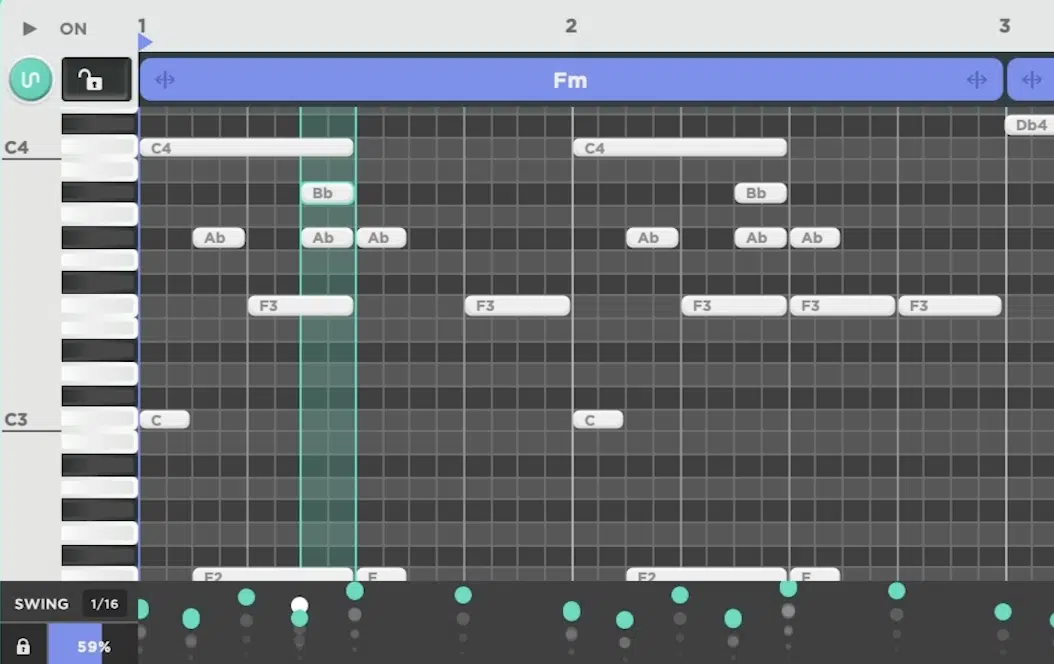
If your AI melodies feel too robotic straight out the gate, simply head on over to the Humanization settings…
Here, you can randomize velocity and timing within a range of ±30 ms to give your notes a looser, more expressive feel.
You can also dial in Swing to add groove.
For example, setting swing to 35% on an 85 BPM track can turn a flat melody into something way more edgy and flowy (for some extra intrigue).
Especially if your drums already have that signature bounce, of course.
PRO TIP: Try combining slight timing offset with randomized velocities between 65–100 on each note.
This will give your AI-generated music a more realistic, hand-played vibe without sounding sloppy or unprofessional.
Step 6: Apply Onboard FX for Instant Character
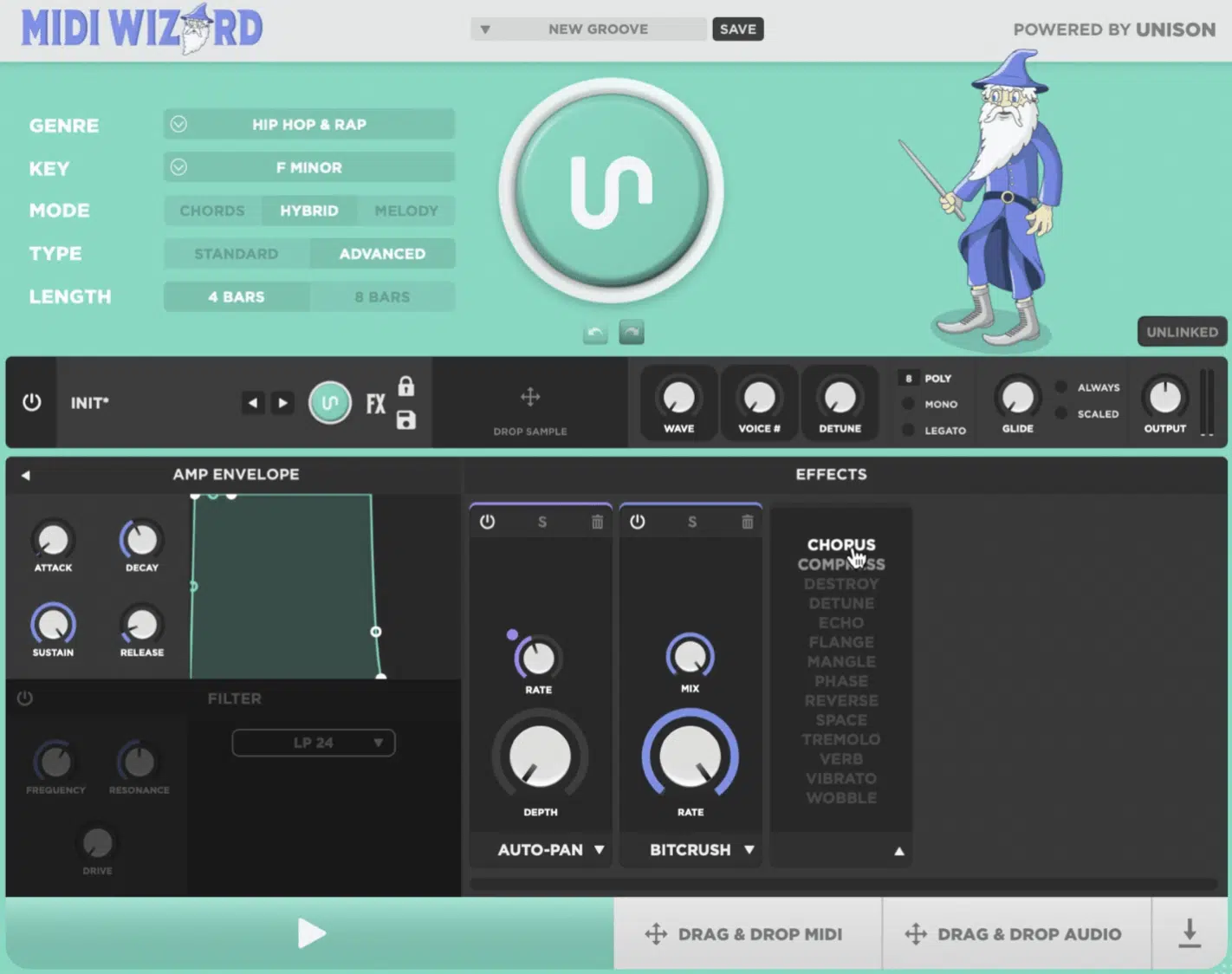
Once you’ve landed on a melody you like, don’t leave it dry, my friends.
MIDI Wizard gives you 16 built-in FX that can completely change the tone and emotion of your AI melodies with just a few simple clicks.
For example, adding Bitcrush and Destroy to a bright lead can give it a gritty, vintage texture perfect for boom bap or dark trap.
On the other hand, using Verb, Tremolo, and Reverse on a pad-based melody can help build atmospheric intros for songs with softer vocals.
Side note, each and every FX has its own tweakable parameters so you can, for example, set delay feedback to 40%, reverb size to 80%, or detune by 12 cents.
And the best part is, you’ll be free to preview it all in real time without exporting anything, which makes it easy to fine-tune the mood on the fly!
Step 7: Drag & Drop Directly Into Your DAW

Once you’ve finalized your AI melodies, you can drag them directly into your DAW as either MIDI or audio.
All you have to do is:
- Click
- Hold
- Drop the clip into any instrument track
For example, if you’re working in FL Studio, you can drag the generated MIDI into Harmor for lush pads, or route it through a Kontakt instrument for cinematic textures.
Either way, it’ll snap to the correct grid based on your DAW’s project tempo.
You’ll be free to layer the music generated (the melody) with bass, double it with a different synth patch, or quantize just the downbeats for added punch.
And since everything is royalty-free music, it’s cleared for commercial use from the jump, so you don’t have to worry about any copyright issues or legal nonsense.
Bonus: Advanced Techniques for Working with AI Melodies
Once you’re comfortable creating AI melodies with MIDI Wizard (which won’t take very long, to be honest), there are a few advanced techniques to kick things up a notch. They go way beyond the basics and let you push your AI melodies into more creative, polished, and professional territory.
-
Lock in a Reference Progression & Generate Melodies Around It
One of the most powerful features in MIDI Wizard is the ability to drag in your own chord progression, and have it generate AI melodies that match harmonically in real time.
For example, if you’re working with a 4-bar loop in C minor that plays Cm – Ab – Bb – G, you can drop that progression into the plugin and let the AI analyze the:
- Root notes
- Voicings
- Rhythmic structure
Then, you can build melodies that sit perfectly on top without clashing.
Yes, even if your chords have extensions like 7ths or 9ths, the melody generator still respects those harmonic details.
You can also lock the melody to only include chord tones, passing tones, or a mix of both 一 depending on the complexity you want.
For example, choosing diatonic only keeps things safe and smooth, while modal mixture gives you more color and tension.
Use this to generate music that already feels cohesive with your existing track (especially if you’ve written your own chords but want a second melodic layer that still fits your overall mood and style).
And since the AI melodies respond dynamically to the progression’s rhythm, you’ll notice that syncopated chords lead to more rhythmically active melodies.
While sustained chords invite slower, legato lines, which can be a game-changer when you’re scoring for lyrics, vocals, or cinematic songs.
-
Combine MIDI Wizard 2.0 with Drum Monkey
When you’re looking to build out full songs fast, combining this unique AI music generator with Drum Monkey is a no-brainer.
Especially since they both follow the same genre-matching logic for perfect synergy right out of the gate, which is awesome.
Start by generating an AI melody in Hybrid Mode using a genre like Trap, Future Bass, or R&B (let’s say you’re in D minor at 140 BPM).
Then, open Drum Monkey and load the exact same genre preset to make sure your drums follow your melody’s same:
- Swing
- Syncopation
- Groove profile
And, if you want, you’ll be free to adjust each kit element manually.
For example, shift your hi-hats 10ms ahead to tighten the groove, roll your snares back by 5ms for a slightly dragged feel.
Or, drop the kick by 2dB to make space for layered 808s or mid-heavy melody content.
You can even tweak the drum velocity curve inside Drum Monkey to match the energy of the melody if you’d like.
This could be like boosting ghost notes on your hi-hats when your AI melody is sparse, or reducing fills if your melody already has a lot of motion.
And by locking both plugins to the same BPM and key, you’ll end up with a full section that’s already dialed in for royalty-free music use.
This means you can export, release, or download everything instantly without worrying about clearing samples or dealing with commercial use headaches later on.
-
Resample the Generated Melody and Chop It Like a Sample
After you generate your AI melodies, one of the most underrated things you can do is bounce them to audio, then manipulate like samples.
This is super true if you’re going for something unique that sounds nothing like default MIDI, which you all are I’m sure.
For example, let’s say you’ve got a melodic phrase in A minor…
You can bounce it to WAV, pitch it down -12 semitones, add light tape saturation using something like Zen Master.
Then, chop it into quarter-note slices, reverse one instance, and re-trigger it through a sampler like Serato Sample or Slicex for a gritty, sampled-from-vinyl feel.
You can also layer in a soft vinyl crackle, low-pass filter it at 12kHz, and use LFO modulation on pitch for a subtle detuned wobble.
This will give your AI-generated music that imperfect, human vibe that feels dug-up 一 never computer-built (which is very impressive, actually).
You’ll be free to resample AI melodies into textures that sound like real crate-digging finds, which works great for podcasts, sync placements and intros for songs.
And it also works great layered under lyrics and vocals for a more vintage mood.
And since all music created with MIDI Wizard is royalty-free, you can download and re-release it on all platforms (including popular formats like WAV and MP3).
-
Double Stack Two AI Melodies in Different Octaves
If you want your AI melodies to hit with more presence and depth, try generating two different variations, transpose one up an octave, and play both at the same time.
This will give you a super layered, wide stereo effect that sounds full without getting muddy.
For example, take a melody in C major that’s soft and plucky 一 maybe something using a bell patch with fast attack and no release.
Then what you’ll want to do is stack it with a second version that’s:
- Brighter
- Slightly detuned by 10 cents
- Filtered through a low-resonance high-pass
Run the top line through a stereo widener like Wider or Ozone Imager, cut the low end below 300 Hz, and keep the lower layer mono with light compression (3:1 ratio, -10dB threshold) to make sure it stays centered in the track without overpowering your drums or bass.
This kind of octave layering fills out your range without artificially boosting loudness, which lets you shape tonality for different popular formats.
Plus it adds a sense of creativity that helps the music created stand out as well.
When you pair that kind of harmonic width with strong vocals, clean lyrics, or minimal percussion, you’re giving your AI melodies way more emotional weight.
And the best part is, it won’t sound like AI music, it’ll sound like something you created that people will actually listen to, feel, and remember.
Final Thoughts
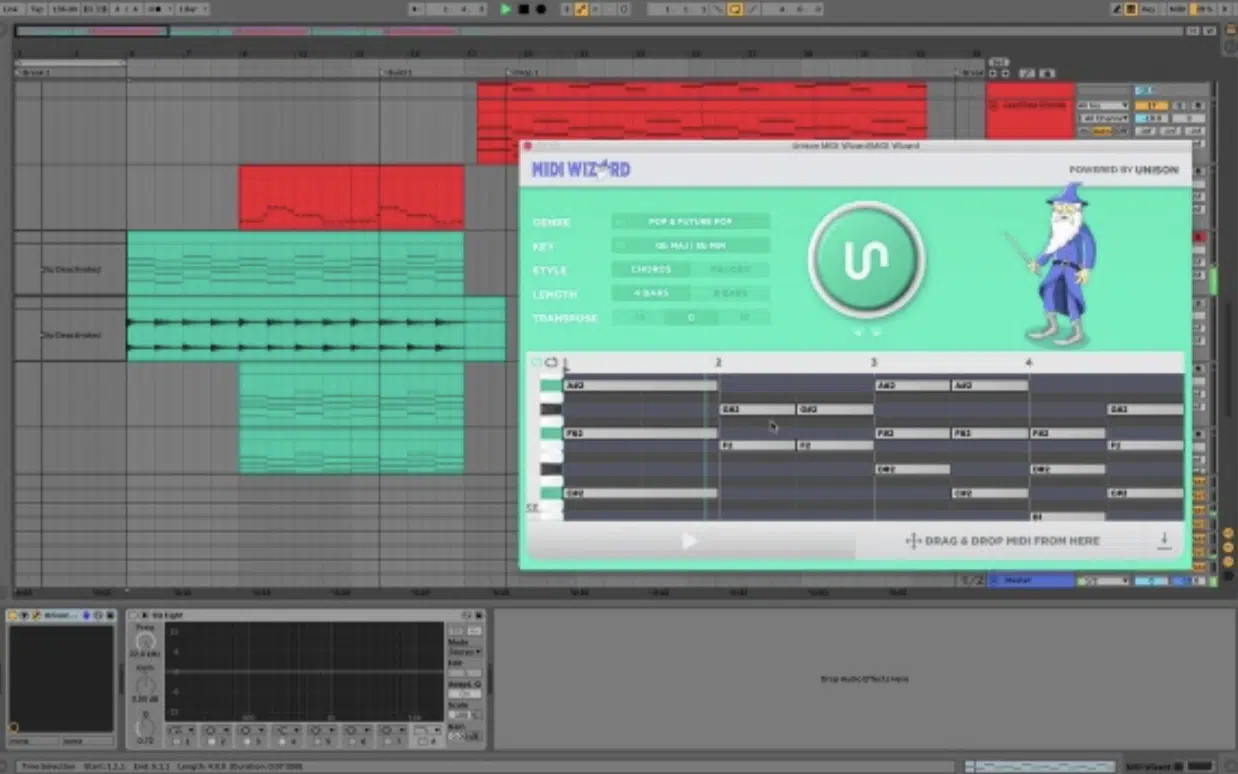
And there you go: exactly how to create irresistible, addicting AI melodies with the #1 AI plugin in the game.
By knowing all about this, you’ll be able to move faster in your creative process and build full sections without getting stuck or second-guessing anything.
Plus, successfully blending AI melodies with your own bass, drums, lyrics, and vocals will help you create songs that actually connect.
They’ll always sound like they belong in real playlists, not templates.
Just remember, it’s all about using AI melodies to amplify your creativity, not replace it.
And never be afraid to resample, flip, detune, or get weird with it, because sometimes that’s where the most original stuff comes from.
This way, you’ll find signature sounds and new ideas that can completely change the game for you.
Until next time…






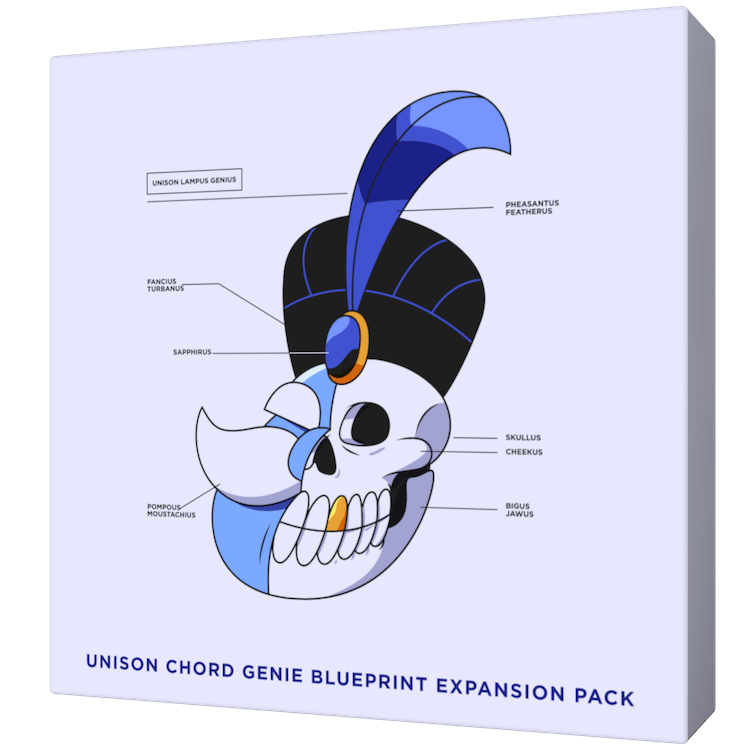
Leave a Reply
You must belogged in to post a comment.